Sign on the Window is your Bob Dylan podcast! This episode features the one you've all been waiting for - 1965's Highway 61 Revisited! Because we know you may have some favorites, we've time-coded the songs below.
After a special announcement, initial thoughts (5:00), context (6:00), Highway 61 (8:00), accolades (9:00), and an overview of 1965 in music (16:00), we get to the songs. "Like a Rolling Stone" (25:00) "Tombstone Blues" (30:30) "It Takes A Lot to Laugh" (34:30) "From a Buick 6" (40:00) "Ballad of a Thin Man" (43:15) We take a break there for the Harmonica Award Nominees (47:00) "Queen Jane Approximately" (49:30) "Highway 61 Revisited" (55:00) "Just Like the Tom Thumb Blues" (1:01:00) "Desolation Row" (1:06:00) And close with the final ceremonies for the Harmonica Awards (1:16:00)
In two weeks: I've got a date with the fairy queen
CONTEXT
Highway 61 Revisited was released on August 30, 1965. It was recorded over six days – June 15 and 16 with Tom Wilson, which resulted in “Like a Rolling Stone,” and July 29 to August 4 under Bob Johnston. According to Bob in Chronicles:
Highway 61, the main thoroughfare of the country blues, begins about where I began. I always felt like I’d started on it, always had been on it and could go anywhere, even down in to the deep Delta country. It was the same road, full of the same contradictions, the same one-horse towns, the same spiritual ancestors … It was my place in the universe, always felt like it was in my blood.
The album peaked at #3 on the Billboard 200 chart and #4 in the UK. It went gold in August 1967 and platinum in August 1997. Rolling Stone said it was the #4 Greatest Album of All-Time behind Pet Sounds, Sgt. Pepper’s, and Revolver.
…revolutionary and stunning, not just for its energy and panache but in its vision: fusing radical, electrical music … with lyrics that were light years ahead of anyone else’s; Dylan here unites the force of blues-based rock’n’roll with the power of poetry. The whole rock culture, the whole post-Beatle pop-rock world, and so in an important sense the 1960s started here.Michael Gray
It’s the kind of music that plants a seed in your mind and then you have to hear it several times. And as you go over it you start to hear more and more things. He’s done something that’s left the whole field ridiculously in the back of him.Phil Ochs
ALBUM ITSELF (20:00)
This was an enormous treat to be able to listen to Highway 61 Revisited relatively early in the show’s history. We won’t linger on these songs textually much, but we do spend some solid time on all nine songs (and give out some harmonica awards along the way!)
“LIKE A ROLLING STONE” (25:00)
It’s like a ghost is writing a song like that … You don’t know what it means except the ghost picked me to write the song. — Bob Dylan, 2004
That snare hit is one of the most famous openings to a record of all time. Bruce Springsteen said it “sounded like somebody’d kicked open the door to your mind … The way that Elvis freed your body, Dylan freed your mind.” Michael Gray described the lyrics as “a chaotic amalgam of blues, impressionism, allegory, and an intense directness.” It was #1 on Rolling Stone‘s list of the greatest songs of all-time.
"TOMBSTONE BLUES" (30:30)
Of course, Nicanor Parra said Dylan deserved the Nobel Prize in Literature for this songs chorus alone. But isn’t it Mike Bloomfield that kinda runs away with this song?
“IT TAKES A LOT TO LAUGH, IT TAKES A TRAIN TO CRY” (34:30)
Originally known as “Phantom Engineer,” this is the lovely song alluded to at the end of “Tombstone Blues.” Daniel thinks this is Dylan’s greatest vocal performance ever. He’s sung this song at the top of his lungs more times than he cares to admit. Don’t forget about that beautiful piano work!
“FROM A BUICK 6” (40:00)
Robert Shelton hears the song as “an earthy tribute to another funky earth-mother” while Heylin sees filler, which is hard to refute. It’s the weakest on the record, but that doesn’t make this skippable. Based on “Milk Cow Blues” by Sleepy John Estes and named after Buick Master 6’s from the 1920s, this would become Steve Jobs’ all-time favorite song (wtf). Also, does it get any better than I need a dump truck baby to / unload my head. No it does not.
“BALLAD OF A THIN MAN” (43:15)
Mike Marqusee in Wicked Messenger: Bob Dylan and the 1960s called this one of the “purest songs of protest ever sung.” Al Kooper, on organ, said this was “musically more sophisticated” than anything else on the record. Drummer Bobby Gregg recalled telling Bob, “That is a nasty song, Bob.” Andy Gill in The Independent in the UK, called this “one of Dylan’s most unrelenting inquisitions, a furious, sneering, dressing-down of a hapless bourgeois intruder into the hipster world of freaks and weirdoes which Dylan now inhabited.”
HARMONICA AWARD NOMINEES (47:00)
The most heart-breaking and spiritual award: “It Takes a Lot to Laugh…”
The most classic and integral to a song award: “Like A Rolling Stone”
The Bob Dylan realized he didn’t take off his harp-holder award: “From A Buick 6”
The harmonica couldn’t have been as good as guitar lick award: “Tombstone Blues”
I’m just now realizing there’s less harmonica on this album than envisioned with these Harmonica Awards award: “Ballad of a Thin Man”
“QUEEN JANE APPROXIMATELY” (49:30)
Another track that doesn’t get as much love as it deserves. Released as a B-side to "One of Us Must Know (Sooner or Later)" in early 1966. Kelly spotted the tuning issue immediately. Bassist Harvey Brook’s noted this time: “Tuning or mistakes were not as important” to the overall performance. This is “Rolling Stone”-lite. A subject of dubious authenticity, until he arrives.
“HIGHWAY 61 REVISITED” (55:00)
Released as a B-side to “Can You Please Crawl Out Your Window?” in November 1965. It’s #373 of Rolling Stone‘s 500 greatest songs of all-time. The police whistle is such an inspired choice. It’s listened in the album credits as “police car.” Like “Honest With Me,” this song is a traipse through American history: from Abraham, to Leadbelly and Blind Willie McTell, to the French on the Mississippi, to the racial politics, to the world’s impeding end (right where it all started, take a seat!).
“JUST LIKE THE TOM THUMB BLUES” (1:01:00)
The title of the song comes from Arthur Rimbaud’s poem “My Bohemian Life (Fantasy)” when he refers to himself as “Tom Thumb in a daze.” That’s not the only literary reference, but we’ll have to save it for another day. In case you wanted to be more confused, in 1966, in Australia, Dylan clears up just what the heck the Tom Thumb blues are:
This is, this is called Tom Thumb. This story takes place outside of Mexico City. It begins in Mexico City and it ends really in Des Moines, Iowa, but it’s all about this painter, he’s a quite older fellow, he comes from Juarez, Juarez is down cross of Texas border, some few feets, and he’s a painter. He’s very very well-known painter in the area there and we all call him Tom Thumb and when Tom Thumb was going through his blue period, this is one of the most important times of his whole life and he’s going to sell many many paintings now taken from his blue period and this is all about Tom Thumb and his early days and so we name this Just Like Tom Thumb’s Blues — Bob Dylan, 1966
“DESOLATION ROW” (1:06:00)
In his 33rd 1/3, Mark Polizzoti notes the similarities to the 1920 Duluth lynching of black circus workers and calls this “the ‘Home On The Range’ of the frightening territory that was mid-sixties America.” The song is #187 on Rolling Stone‘s list of the greatest songs of all-time. It was recorded with organ and guitar (released first on The Bootleg Series, Volume 7 and later on The Cutting Edge) but the album is just Bob and Charlie McCoy on the scrumptious lead. Polizzoti praises that decision: “While Dylan’s panoramic lyrics and hypnotic melody sketch out the vast canvas, it is McCoy’s fills that give it their shading.” This will be a long episode whenever we get it so we’ll save the meat for later. We’ll let the great Sean Wilentz have the final word:
In all of its strangeness, the song mocks orthodoxies and confining loyalties of every kind—loyalties to religion, sex, science, romance, politics, medicine, money—which the singer has rejected. The least mysterious verse (although it is mysterious enough) comes next to last. Crammed aboard the damned Titanic, the people are oblivious to what is happening; instead, they shout an old reliable left-wing folkie tune (made popular by the Weavers), “Which Side Are You On?” T. S. Eliot and Ezra Pound, respectively the author and the editor of The Waste Land, struggle for command of the ship; but it is all a laugh to the calypso singers; and down beneath the dreamlike sea where lovely mermaids flow, and where (simple) fishermen hold (simple) flowers, thoughts of Desolation Row are unnecessary. Neither strait-minded politics nor modernist high art will save the ship from crashing and going down. — Sean Wilentz
FINAL HARMONICA AWARDS (1:16:00)
The rest of the nominees:
The so good it hurts, no, literally, it was a bit too loud and my ears are bleeding AND I LOVE IT award: “Queen Jane Approximately”
The police have arrested your harmonica for marijuana award: “Highway 61 Revisited”
The magisterial, just simply perfect, the #1 harmonica solo award: “Just Like the Tom Thumb Blues” (plus that last verse)
The How? Just how does a guitar and harmonica cause physical sensations as it transports you out of this world and into one of dreams, wonder, terror, violence, hope, compassion, morbidity, crass materialism, utter indifference and absolute beauty award: “Desolation Row”
And the awards go to:
“Desolation Row”
“Just Like the Tom Thumb Blues”
“Tombstone Blues”
“Queen Jane Approximately”
“It Takes a Lot to Laugh…”
“Like a Rolling Stone”
“From a Buick 6”
Honorable attempt: “Highway 61 Revisited”
Zero effort, banned for life: “Ballad of a Thin Man”
MIXED UP CONFUSION
Before going into the album, Kelly and I also compiled a 1965 playlist and a special Mixed Up Confusion for the occasion. Listen to the podcast below, playlist above.
THE EPISODE’S BOOKLET & PLAYLIST
RECOMMENDATIONS
So much of this week was spent in 1965 and with Highway 61 Revisited that we didn’t have much else to sink our teeth into. Kelly did manage to watch the Netflix documentary Seeing Allred.
Daniel’s been listening to the new records by Ought and Senses Fail. He’s also deep into the second season of Atlanta.
ENDINGS
There are 481 songs left.
Kelly guessed #302, "Early Mornin' Rain," off Self Portrait.
It’s #361. We return to Tempest with "Soon After Midnight."
Follow us wherever you listen to podcasts. See our real-time playlist See That My Playlist is Kept Clean on Spotify. Follow us intermittently on Twitter and Instagram.
Tell your friends about the show, rate and review wherever they let you, and consider supporting us by subscribing or at Patreon.



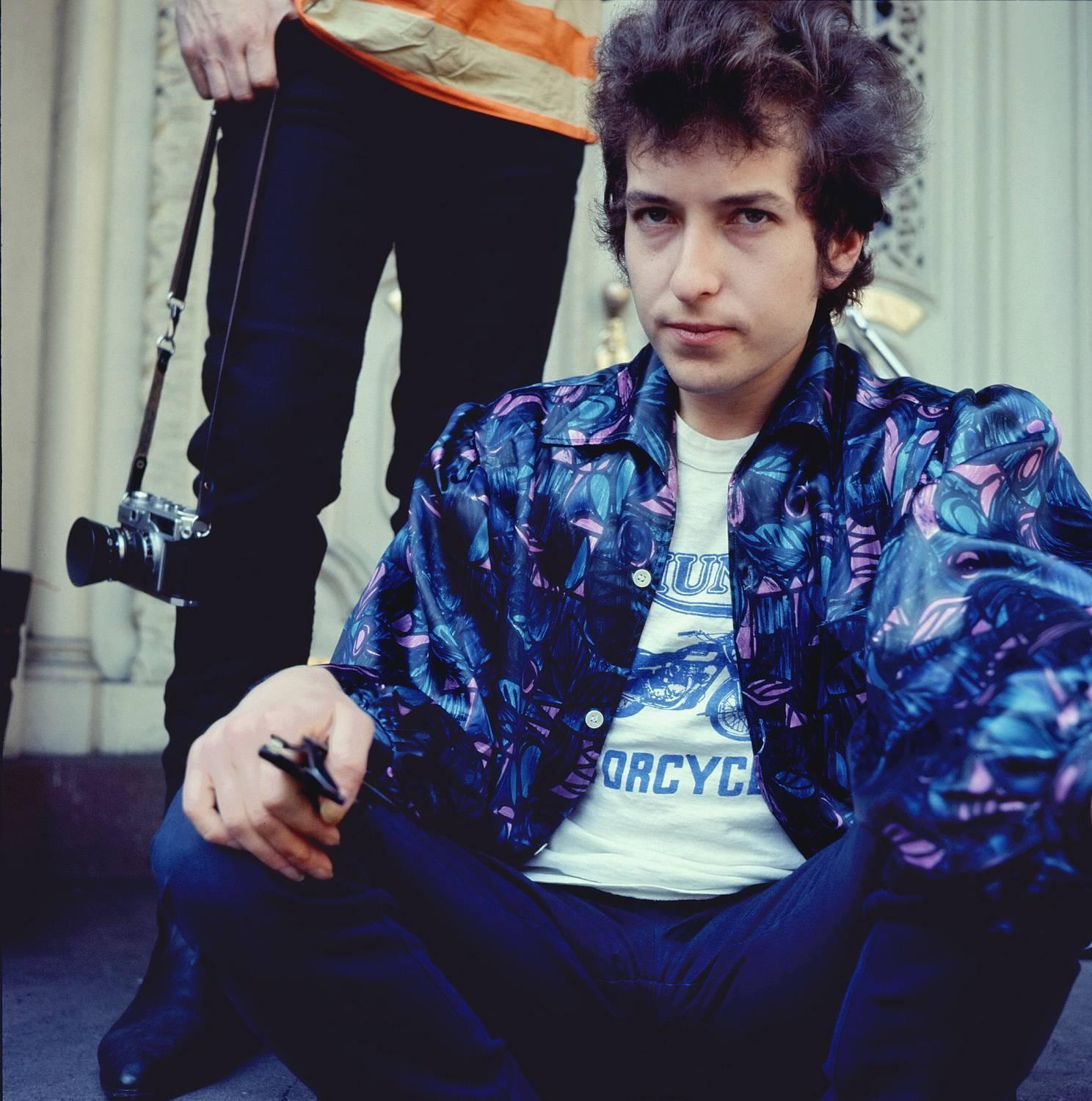



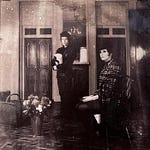
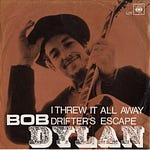
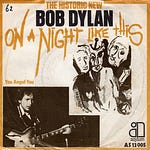

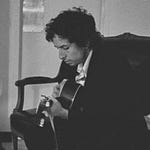
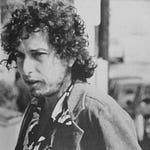

Share this post